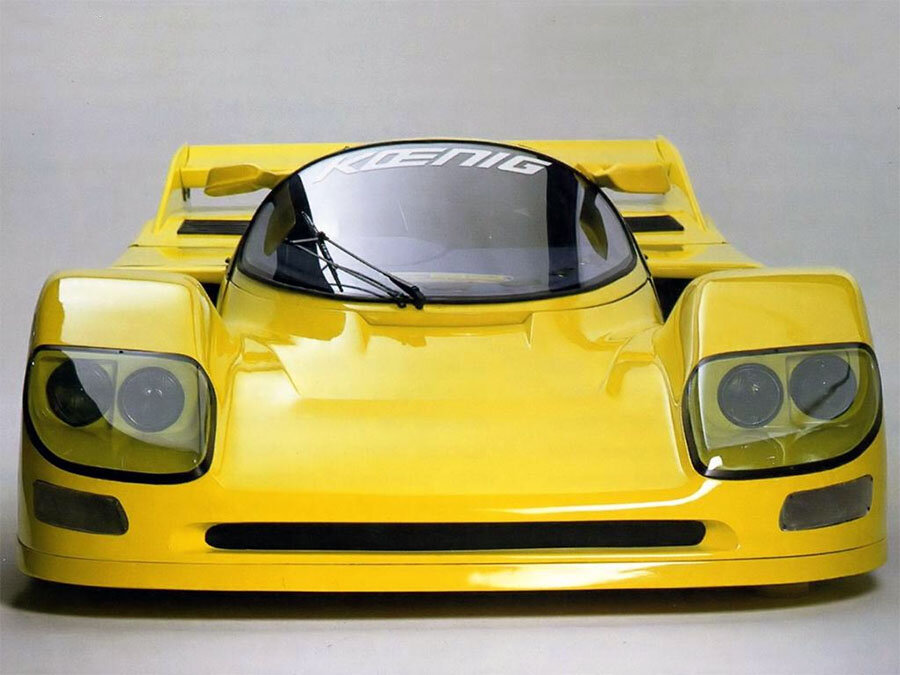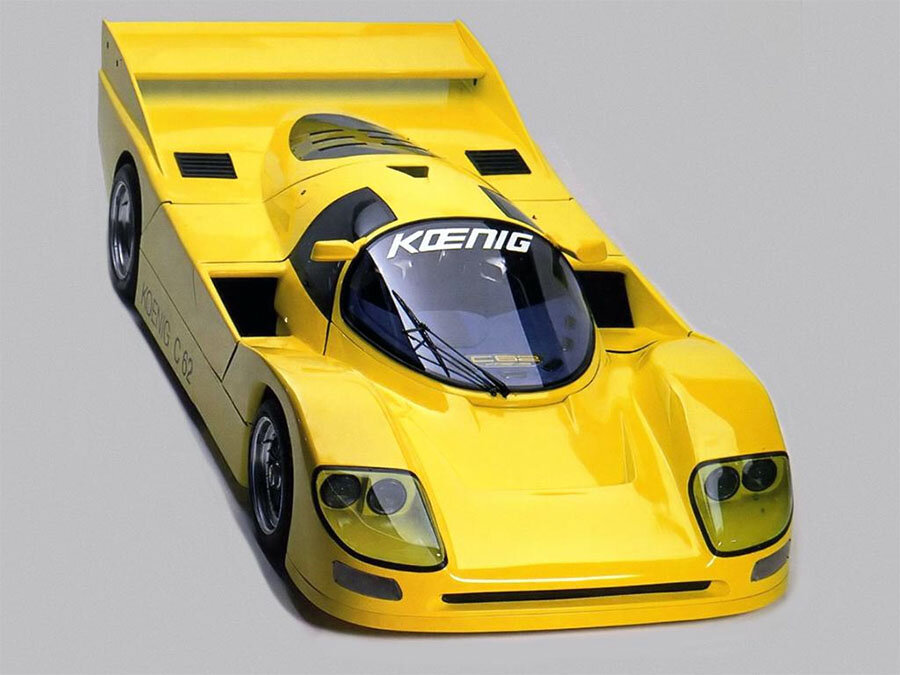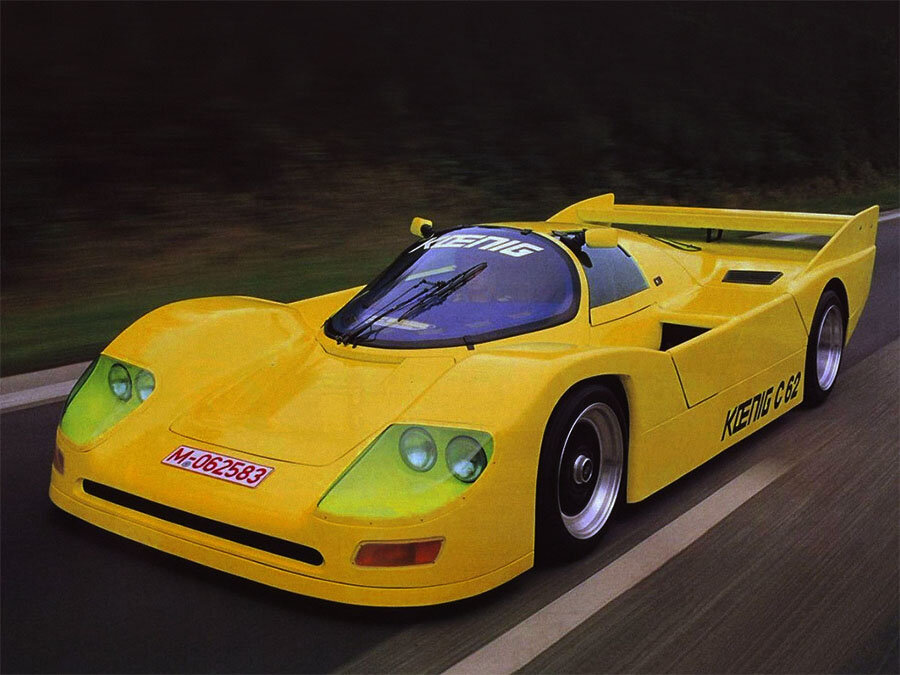Guide: Koenig Specials Porsche C62 - a Historical & Technical Appraisal
/BACKGROUND
Willy Koenig began tuning Ferrari BBs in the mid 1970s. His fledgling business quickly began to attract customers from around Europe.
Within a couple of years, Koenig Specials had expanded to other Ferraris like the 308. In addition, BMWs, Mercedes and Porsches were also now being transformed into spectacular one-off creations.
When engineer, Franz Albert, and stylist, Vittorio Strosek, joined the firm in the early 1980s, Willy Koenig was able to take his offerings to the next level.
Koenig Specials was by now synonymous with outrageous body kits, monster turbocharged engines and unique personalisation programmes on a par with the best in the world.
As economies in the west, Japan and Gulf states boomed, customers flocked to Koenig's downtown Munich workshops. From here, literally hundreds of super high end European sports and luxury cars emerged.
Gradually, more and more ambitious projects were undertaken. In addition to forced induction motors, Koenig Specials started to produce retractable hard tops and interiors riddled with the latest electronic gizmos.
By 1990, the collector car market was red hot. At this point, Willy Koenig decided to undertake arguably his most ambitious project yet: a road-going version of the Porsche 962 Group C racing car.
Each Koenig C62 would be assembled from brand new 962 tub and fitted with custom Kevlar bodywork. Power would come from a twin turbocharged Flat 6 that could offer up to 800bhp on full boost. A production run of 30 cars was anticipated, each of which would retail at DM1.8m (equivalent to around $1m or £650,000).
Willy Koenig was not the only person to have such a car up his sleeve. Koenig's fellow countryman, Jochen Dauer, was known to be working on a road-going 962 programme. Over in England, Vern Schuppan also had a similar idea in the works.
The reason Koenig, Dauer and Schuppan chose to base their creations on the Porsche 962 was chiefly down to parts availability. Every component was available off the shelf direct from Porsche, which made assembly a relatively straightforward affair. In addition, the 962 and its predecessor, the 956, had the best win record of any Group C car; the handsome Porsche was an icon of its era.
A 1:5 scale model of the C62 was presented at the Geneva Motor Show in March 1990. Immediately afterwards, the first three tubs were ordered.
A yellow prototype was up and running by early 1991 which made the C62 the first legitimate Group C car built for road use.
CHASSIS
Koenig purchased tubs from John Thompson’s TC Prototypes in Northampton. The Thompson tubs were renowned as among the best in the business and had already been supplied to to the likes of the Brun, Kremer and Obermaier racing teams.
The TC Prototypes chassis supplied to Koenig were of an aluminium honeycomb construction reinforced with carbonfibre inserts and an integrated rollcage.
Double wishbone suspension was used all round with additional rocker arms for the inboard rear configuration. Anti-roll bars were fitted at either end.
Many new suspension parts were added to include softer springs and dampers. Ground clearance was suitably raised in the interest of practicality.
Koenig retained the standard 962’s cross-drilled and ventilated disc brakes along with its Brembo four-piston calipers. However, more street-oriented pads were fitted.
The 17-inch diameter centre-lock BBS alloy wheels measured 9-inches wide at the front and 13-inches wide at the rear. They were originally shod with Bridgestone tyres.
ENGINE / TRANSMISSION
In the engine bay was a twin turbocharged and intercooled Flat 6 derived from the Porsche 911. It displaced 3364cc. Unlike the standard 962 motor, the C62 engine was fully air-cooled with two valve single overhead camshaft heads.
Soft camshafts were fitted along with Bosch L-Jetronic fuel-injection and individual throttle bodies.
The Bosch Motronic engine management was custom mapped to improve throttle response, optimise low down torque, minimise noise and reduce emissions. To this end, the exhaust system was fully silenced and catalysed.
The KKK turbos were mounted in the side pods, just behind the intercoolers.
At 1.0 bar boost, the C62’s engine developed 588bhp at 6300rpm and 553lb-ft at 4500rpm.
With the wick turned up to 1.4 bar, the power output jumped to 800bhp at 6300rpm.
Koenig retained the same five-speed manual transaxle used by the regular 962. Transmission was via a hydraulically-assisted clutch and spool differential.
BODYWORK
Each C62 was fitted with a new Kevlar composite body. The panels were made by Wethje Composites in Garching and painted at Romaldini Carbody in Munich.
Although the general profile of the original low drag 962 was broadly retained, not a single body panel was interchangeable with the C62.
To meet the German TUV regulations, the C62’s headlights had to be moved further up the more pronounced front fenders. The lights themselves were housed under tinted Plexiglas covers. Wraparound indicators were positioned just below.
The C62’s nose was noticeably longer than the standard 962. It incorporated a shallow intake that fed cool air to a front-mounted oil cooler. Instead of a removable single piece front clip, the C62’s nose was fixed in place. Access to the front assemblies was now via a detachable lid.
Two-piece doors comprised a butterfly lower section and Gullwing upper section.
At the back of the domed cockpit was a vented Plexiglas window that put the engine on full display. The rear screen was hinged at the leading edge to allow access, but the entire rear clamshell could also be removed if necessary.
To balance the aero effects of the new shell, the C62’s underbody was suitably reworked.
Compared to the standard low drag 962, the C62 was 188mm longer, 52mm wider and 105mm taller.
INTERIOR
Each Koenig C62 was right-hand drive with a right-hand gear lever as per the factory 962.
Two full-size seats were squeezed into the cockpit. The carbonfibre shells were upholstered with leather inserts to match the dashboard and flat-bottomed Momo three-spoke steering wheel. Some cars also came with leather applied to the A-pillars and windscreen surround. Four-point safety harnesses were standard.
No carpets were fitted.
Housed on the carbonfibre dash fascia were five gauges with body coloured bezels. The instrument faces were normally coloured according to the customer’s requirements.
Directly behind the detachable steering wheel was a 9000rpm rev counter flanked by a combined oil temperature / oil pressure gauge to the right. To the left was a 400kmh speedometer, a combined fuel / air temperature read out and a turbo boost gauge.
Standard equipment included electric mirrors, hydraulic door locks, air-conditioning and a Sony stereo.
Unlike the standard 962, a handbrake was fitted in order to meet the TUV’s road car regulations.
WEIGHT / PERFORMANCE
Koenig quoted a weight of 1100kg, a top speed of 235mph and 0-62mph time of 3.3 seconds.
PRODUCTION
Although a production run of 30 cars was originally anticipated, only three C62 were ever manufactured. The early 1990s recession inevitably reduced demand, but there was no doubt Koenig’s original production target was wildly optimistic.
The yellow C62 prototype was followed by customer cars in red and black.
Text copyright: Supercar Nostalgia
Photo copyright: Koenig - https://www.koenig-specials.com/






























